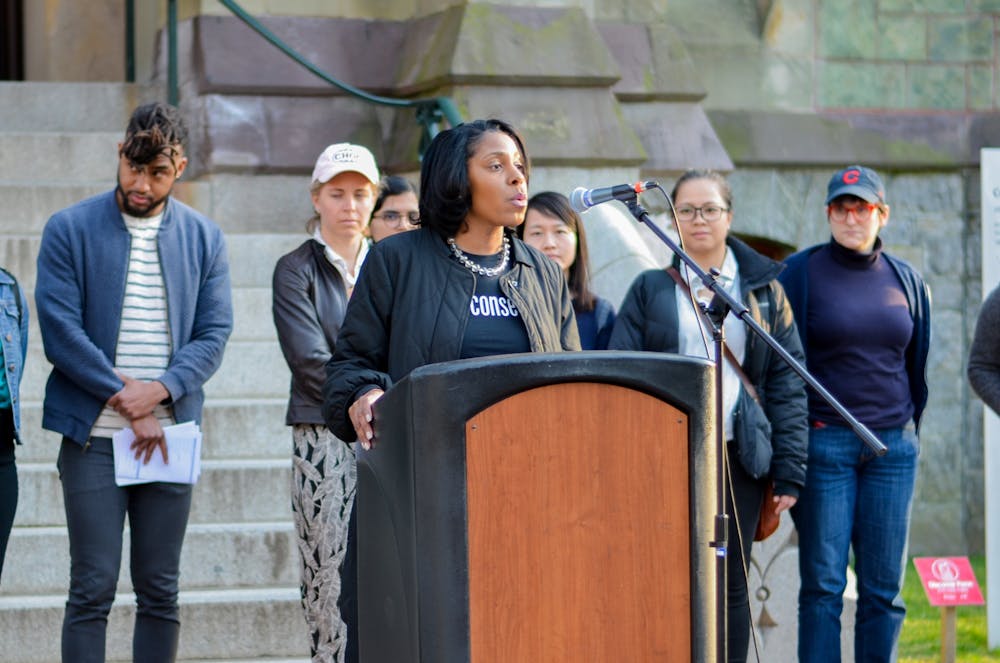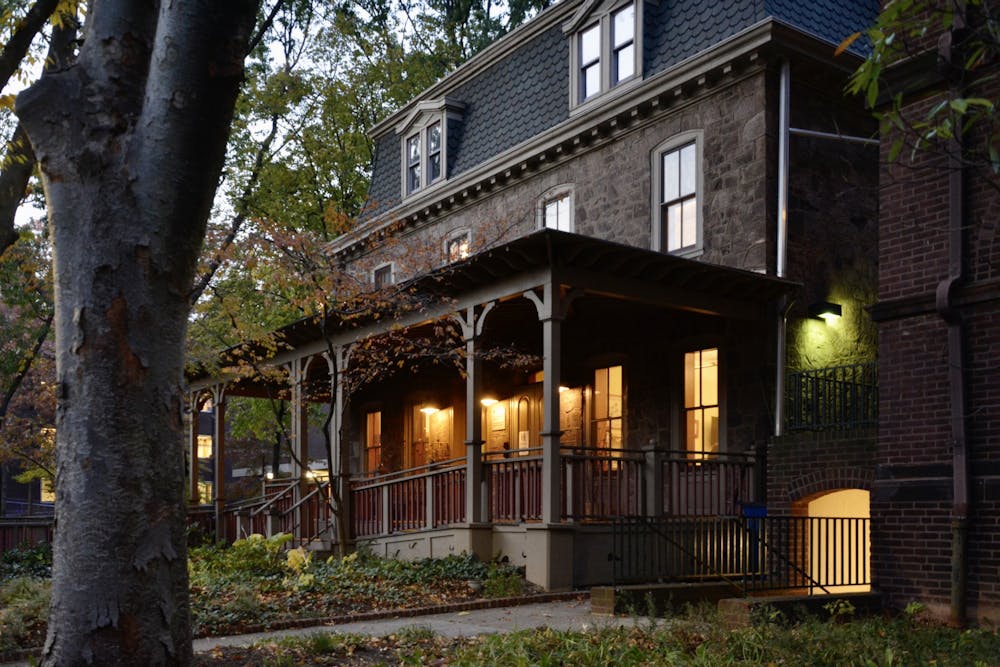
In Sherisse Laud-Hammond’s first year as the director of the Penn Women’s Center, she has led the center in an effort to rebrand itself to become more inclusive.
Laud-Hammond said that the number of events, meetings, classes, and tours held at PWC has increased from 292 to 382 in the past year. PWC has also changed their logo to include all people regardless of gender and renovated their physical space to look more fresh and inviting, Laud-Hammond added.
Before stepping into her role, Laud-Hammond cited promoting inclusivity as a major goal for her time at PWC. Laud-Hammond and her staff made the decision to remove the female symbol from their logo and replace it with a mimosa flower, the symbol for International Women’s Day and a logo more inclusive of all identities, according to Laud-Hammond. Laud-Hammond added that the new logo is still purple, which is the color known to symbolize women around the world.
The PWC created a collection of different colored images known as a "color story" that they used as inspiration to replace the logo and redecorate the space, Laud-Hammond said. The multi-purpose room now features a new carpet, whiteboard, and comfortable chairs in more soothing and bright colors to replace the folding chairs, PWC Associate Director Elisa Foster said. Foster, who has worked at the center for almost three years, added that the new changes give a more "uplifting and modern" aesthetic to the center.
Laud-Hammond said PWC also consulted with students, faculty, and staff to ensure that the changes made to the center accurately represented the community.

The interior of the Women's Center has been renovated under Laud-Hammond's guidance to be more fresh and inviting.
The number of people reserving the multi-purpose room and other spaces at the center has greatly increased in the last year, Laud-Hammond said. She cited an uptick in partnerships between students, staff, and faculty, tours to allow people to see the space, and operation hours, which now include Saturdays, as potential reasons for this increase in visitors.
College junior Ale Cabrales, who has worked at PWC as a work-study student since her first year at Penn, said that in addition to an overall increase in visitors, the visitors have been more diverse.
“When I first came into the Women’s Center, the Women’s Center was seen as a white cis-women’s space,” Cabrales said. “Now that Sherisse has stepped in, I notice a lot more diversity, not just with the kind of people that come in, but also with the kind of groups that are using our spaces."
Cabrales added part of this change could be a result of Laud-Hammond's connections from when she studied in the School of Social Policy and Practice. She graduated from the school in 2005 and later served as associate director of admissions in SP2. Laud-Hammond said that relationships and building connections with people from all corners of the Penn community are key to growing PWC's reach in the Penn community.
“The really great thing about having someone who has a history with Penn is she was able to bring in that network of people that we didn’t already know,” Foster said.
Laud-Hammond added she believes she is making progress toward increasing inclusivity at PWC, but hopes to continue to make the center more welcoming to all members of the Penn community.
“Another goal is to have the center as full as possible,” Laud-Hammond said. “I would be happy if next year it increased another hundred events.”
The Daily Pennsylvanian is an independent, student-run newspaper. Please consider making a donation to support the coverage that shapes the University. Your generosity ensures a future of strong journalism at Penn.
Donate






